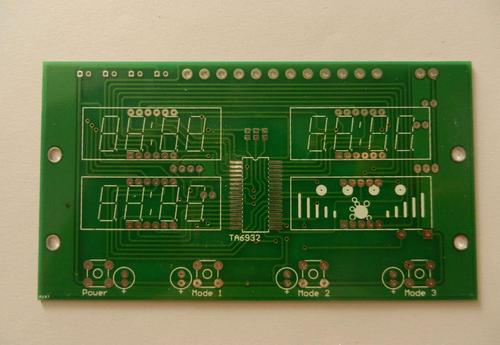 +86 755 2794 4155
+86 755 2794 4155  sales@knownpcb.com
sales@knownpcb.com
-
Shenzhen KNOWNPCB Technology Co., Ltd.
 +86 755 2794 4155
+86 755 2794 4155  sales@knownpcb.com
sales@knownpcb.com
 2024-10-10
2024-10-10
 103
103

Medical equipment PCBs (Printed Circuit Boards) play a crucial and highly specialized role in the field of healthcare.
1. High - Reliability Requirements
Medical equipment is often used in life - critical situations, so the PCBs within them must be extremely reliable. For example, in a cardiac defibrillator, the PCB controls the charging and discharging of electrical energy to the patient. Any malfunction could have dire consequences. These PCBs are designed to have a high level of redundancy and fault - tolerance. Components are carefully selected and tested to ensure long - term stability. They need to withstand continuous operation for extended periods without failure. High - quality materials are used to resist wear, corrosion, and temperature variations. For instance, the PCB may be exposed to different ambient temperatures in a hospital environment, from cold storage areas to warm operating rooms.
2. Miniaturization and High - Density Design
Many medical devices are required to be portable and compact. This drives the need for miniaturized and high - density PCBs. In devices like portable ultrasound machines or insulin pumps, space is at a premium. Designers use advanced techniques such as multi - layer PCBs and surface - mount technology. Multi - layer PCBs allow for more components to be integrated within a small area. Surface - mount components are much smaller than through - hole components and can be placed closer together. This not only saves space but also reduces signal paths, which can improve performance and reduce interference.
3. EMI/RFI Shielding and Compatibility
Medical equipment often operates in an environment with other electronic devices. PCBs in medical equipment need to be designed to minimize electromagnetic interference (EMI) and radio - frequency interference (RFI). For example, in a hospital room, there are multiple devices such as monitors, infusion pumps, and telemetry devices. If a PCB in one device emits excessive EMI/RFI, it could interfere with the operation of other devices. Shielding techniques are employed to prevent this. Special materials and enclosures are used to contain electromagnetic fields. Additionally, the PCBs must be compatible with the various electrical and communication standards used in medical facilities, such as those for data transfer between devices.
4. Regulatory Compliance and Safety
Medical equipment PCBs must comply with strict regulatory requirements. In the United States, for example, they need to meet the standards set by the Food and Drug Administration (FDA). These regulations cover aspects such as electrical safety, radiation emissions (if applicable), and biocompatibility. Biocompatibility is especially important for PCBs that may come into contact with the patient's body, such as in implantable devices or devices used for invasive procedures. The materials used on the PCB surface and in the components must not cause any adverse reactions in the patient.

Or call +86 755 2794 4155
Inquiry Now

